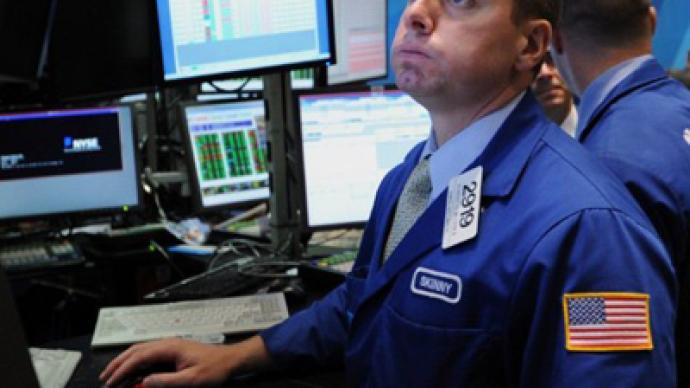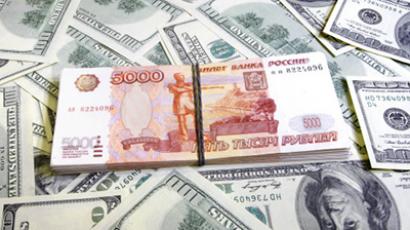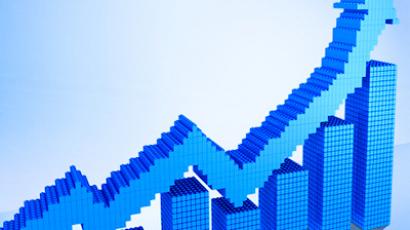The great fear stalking global markets

Another selloff in global equities has underlined the fragile nature of global investor sentiment, with risks that simply cannot be discounted driving a flight to safety, and global leaders looking increasingly less able to do anything about it.
Besieged by developed world debt The catchword of global markets since early 2008 when Bear Stearns went the way of the dodo is debt. Consumer debt in much of the developed world, sovereign debt across much of the developed world, and exposure to debt on bank balance sheets. It is all a far cry from when the opening up of financial markets in the 1980s enabled credit to be extended to consumers in the developed world. The consumer led economic growth that drove markets worldwide for a generation, spawning new products, new services, an endless process to drive prices and margins lower, which in turn helped push new services and production opportunities for the developing world to tap into consuming markets, has given way to something else – the realisation that after a generations worth of credit fuelled binging, those consumers are ‘strapped out’ and need to focus on meeting repayments. That realisation is now driving governments and businesses worldwide to look elsewhere than developed world consumers for growth.The more recent investor concern, however, is sovereign debt. Quite often the governments representing those consumers are ‘strapped out’ as well. The US, the world’s largest and most conspicuous consumer nation, has a public debt which has cleared 100% of GDP – debt of $14.58 Trillion in early August, compared with a GDP of $14.53 according to US Treasury figures. But it is far from the worst, and despite the political charade over raising its debt ceiling and subsequent downgrade to AA by Standard & Poor’s, is hardly a realistic default proposition anytime soon. The United Kingdom had a public debt ratio of just over 60% to GDP in July. Japan, the world’s third largest economy, which also had its rating downgraded earlier this year, is up over 200%. Greece, the recent bete noir of global financial markets is up over 145%, Italy just below at 130%, and the Eurozone as a whole is more than 65%. It doesn’t really matter too much how they have got there – financial sector bailouts, bloated public sectors, taking private bank collapses onto public balance sheets, or stimulus measures – the fact of the matter is they have got so far into debt, that getting out is going to hurt. Keynesian economics has traditionally championed the role of the state stepping up to the plate to spend when the private sector goes into decline, and then easing back as the private sector rebounds. But across much of the developed world the scope for the state to lift spending in order to increase aggregate demand, or to keep it from contracting, is profoundly limited. The debt ceiling imbroglio in the US, coupled with the championing of austerity across the UK and much of the Eurozone, means that the two largest developed world economies are either right out at the end of their limit, or actively cutting back their outlays.Looking over the edge at recessionSo with the private sectors of the developed world disinclined to spend, and the governments largely unable to spend more, global investors are looking at the global economy where the two largest drivers, the US and the Eurozone, are slowing right down. Two years after the March 2009 nadir of the financial crisis, the recent posting of 2Q 2011 GDP results of 0.0% in France and 0.1% in Germany, in the core of the Eurozone, coupled with the 1.3% 2Q posting in the US (which also saw the revision of 1Q GDP growth from 1.9% to 0.4%) was nothing short of depressing. After two years of record low interest rates, quantitative easing, and liquidity support, the developed world is stalling.That leaves companies, consumers, and governments wondering where growth can come from. Consumers aren’t likely to be inclined to spend more, when they owe a lot and are wondering about unemployment or if their employer is going to be paring back, or if they are concerned that government provided services which they use, are likely to disappear and see them out of pocket to cover the need. They start looking at things they can do without, and ways to spend less. The paradox of thrift sees the corporate sector delaying plans for new products, new service, new plants and new employment opportunities. Companies not only cut back, but they hold off on investing in the future because they are seeing a smaller, leaner, or a far tougher future.At that point, short of something being developed to sustain aggregate demand the cycle potentially becomes self-fulfilling.The here and the economically damnedThis is essentially the situation the global economy, or at least most of the developed part of it, finds itself in at the moment.Economies are at stall speed, or in outright recession, and there is no sign of likely succour.European governments don’t have the funds or the political will, and can’t coordinate themselves to deal with what markets would see as a major sovereign debt issue in the periphery, having treated it largely as a liquidity issue when there is a strong case for acknowledging that for some countries it is certainly a solvency issue.Recent weeks have seen the fears rattle the share prices of French Banks, with capital markets already skittish about Italy, Spain, overlooking Cyprus, and now factoring in the certainty that the entire Eurozone economy is slowing, if it has not ground to a halt.Across the Atlantic in the United States, what has been a stronger rebound out of the depths of early 2009, has again slowed.There are legitimate fears about the size of its budget deficit, a current account that is adding to its debt burden every day, and questions over whether there is the political will or degree of cohesion between the major parties to develop a coherent fiscal response to engendering growth and dealing with the longer term debt issues.On top of that is the overt political hostility to the Federal Reserve, and Chairman Ben Bernanke, and its attempts to both maintain monetary stimulus, and ensure liquidity for a financial sector that remains febrile in the wake of events in 2008.On top of that is its still ugly housing market, with its unsold property overhang still having the potential to send prices lower, and sap consumer sentiment further in a society where housing remains inextricably linked to spending power.Tied to the modelThis isn’t to say of course, that things are particularly rosy elsewhere.Japan remains locked in its generation long struggle against deflation, and it needs to address the economic consequences of the March earthquake and tsunami, while sorting out a debt and demographic profile that has many wondering if it will ever see strong growth in anyone’s lifetime.Across the water in China there is strong economic growth, indeed the 10% it averages looks nothing short of miraculous, same as there has been for much of the past generation, in the one legendary economic performance of the age, and one which holds out the hope that if the rest of the world can hold its nerve, then China may offer at least hope that it can help fuel global demand.But the Chinese economy is slowing, and it too has major risks.A real estate bubble that needs to be slowly unwound, an inflation problem that has seen it, after a generation exporting global disinflationary pressure, now start to export rising prices, and an economic growth rate which has been powered by fixed investment, currently about 50% of GDP growth against a global average of less than 20%. This last has been sustained by a combination of effective currency management, and a focus on exports to the developed world.China in the space of a generation, has become the world’s manufacturing centre, using economies of scale, a cheap labour market, and a Yuan Renminbi generally seen as managed to sustain a competitive advantage in global markets.This combination plus China’s wholehearted encouragement of investment largely explains the investment flowing into it.But it also means that the Chinese economy is potentially very unbalanced, and that in the event of a major global slowdown it needs to work at generating domestic consumption as the key economic driver.Certainly it has been making moves to do this, but equally certain is that largely remains wedded to the export driven model, and that a downturn in the consumption of developed economies will hit China hard, and potentially expose it to massive overcapacity which will hang over investment plans worldwide.Other key emerging economies such as India and Brazil are in similar situations – a downturn globally will hammer their growth prospects.The other key factor to note with the China and emerging economies role, has been their recycling of their current account surpluses.This has seen them buying massive volumes of US Treasuries, as well as other financial assets in the developed world, and has helped flood the world with liquidity looking for a return.This had a number of effects, not least of which has been encouraging the consumption of the developed world, but also adding to the volatility of global markets in terms of the fundswhich will move in or move out according to the risk on risk off scenario unfolding.It searches for any investment which appears safe, and with debt looking less safe than it was, have obviously helped to spur commodity prices, which has fed into the robust, for the time being, positions of commodity exporters such as Russia, Australia, and Canada.But if demand looks like heading south, then commodity prices will head south with them, and the various forms of Dutch disease commodity exporters have experienced in the recent past will recede to expose their economies too.August spectreSo this August we have something of a rerun of August 2008.Incredibly volatile markets stalked by fear that something ugly is just around the corner, and where any given new piece of bad data, or fears about major financial players, triggers a flight to safety and away from risk.If this year sees anything remotely resembling the Lehman Brothers moment of 2008 then we again face a fiscal and economic meltdown.The major slides and rebounds in the Dow Jones FTSE and other global indices of the last two weeks, not to mention the widening debt spreads for Sovereign European debt, and carnage being wrought in share prices for French banksare all symptoms of the great fear in the global markets.That fear is that there is a recession again staring the global economy in the face, and that key governments are not in a position to do much about it.Against that backdrop there is nearly $450 dollars in debt needing to rolled over in Europe in coming months, and increasing fears that major financial players are starting to be concerned about counterparty risk.Nobody is going to be too keen to lend in that environment, and the volatility we have seen in recent weeks is just the precursor of more to come.James BlakeRT Business Internet














